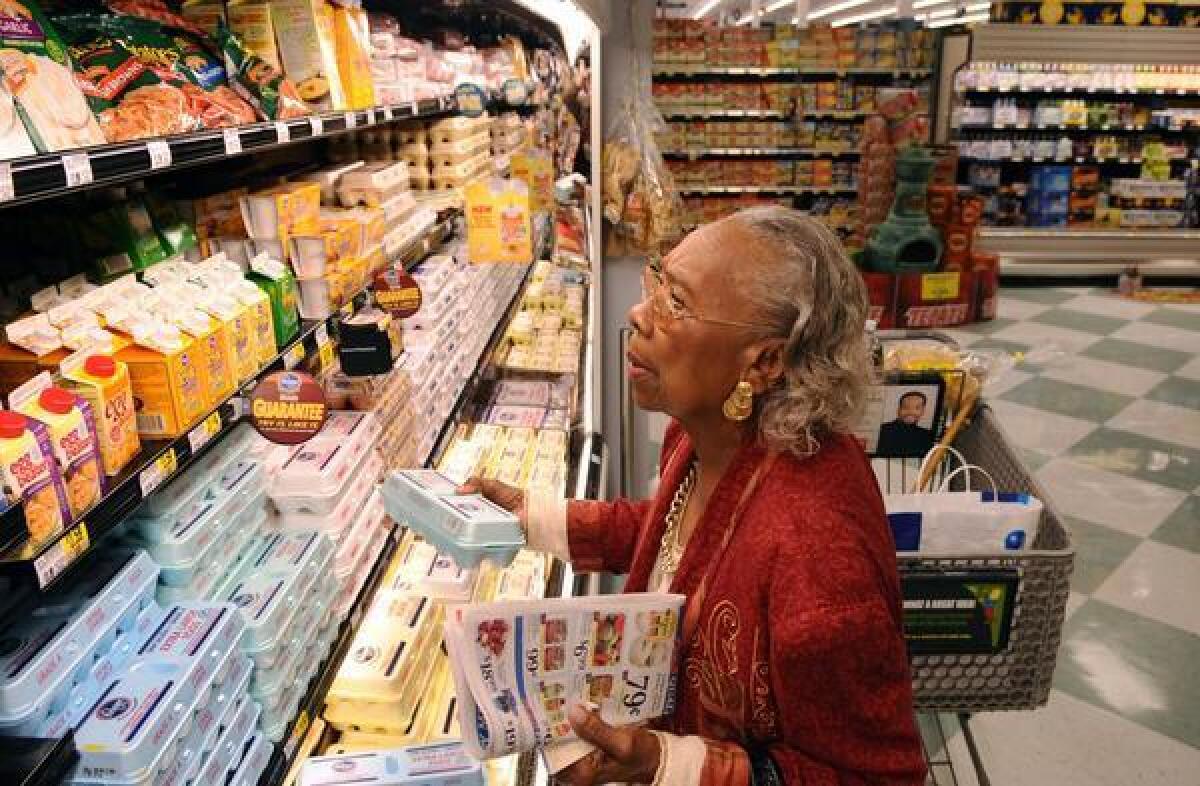Food waste: People misread ‘use by’ label; 40% of U.S. food is tossed

Confused by the “sell by,” “use by” and “best before” labels on the foods sold at grocery stores? So are more than 90% of Americans, who prematurely discard edibles because they’ve misinterpreted the dates stamped on the products, according to a report released Wednesday.
Many consumers read an item’s sell-by date as an indicator of when the food will spoil. But it’s an inaccurate assumption, according to a study conducted by the Natural Resources Defense Council and Harvard Law School’s Food Law and Policy Clinic.
Manufacturers use sell-by dates to help retailers manage their inventory. It encourages stores to sell a product within a specific time frame so that the item still has a shelf life once it’s purchased.
Not even the common “best before” and “use by” labels indicate a deadline after which products go bad, according to researchers. Instead, they are producer estimates of how long the food will be at peak quality.
“Expiration dates are in need of some serious myth-busting because they’re leading us to waste money and throw out perfectly good food, along with all of the resources that went into growing it,” said Dana Gunders, an NRDC staff scientist. “Phrases like ‘sell by,’ ’use by,’ and ‘best before’ are poorly regulated, misinterpreted and leading to a false confidence in food safety.”
The misunderstanding comes at a steep price. Last year, the NRDC found that Americans throw out as much as 40% of the country’s food supply each year, adding up to $165 billion in losses.
Food waste makes up the largest portion of solid trash in landfills, according to researchers.
Some $900 million of expired food is dumped from the supply chain annually, much of it a result of confusion. Misinterpreted date labels cause the average American household of four to lose as much as $455 a year on squandered food, according to researchers.
The study attributes consumer reliance on expiration date labels in part on shoppers’ gradual shift away from farms over the years. So far removed from direct contact with food production, concerns about food-borne illnesses and freshness gave rise to preoccupation with sourcing and safety.
Researchers also blame an incoherent jumble of state and federal regulations and guidelines for unclear expiration date labels. The Food and Drug Administration leaves the determination of such dates up to manufacturers.
The NRDC and Harvard study recommends a more standardized system, one that potentially makes sell-by dates visible only to the retailer or employs smart labels and other technologies that can pinpoint the exact moment when food spoils.
Other options include tweaking the label’s language, using “safe if used by” instead of “best by” or abandoning labels on preserved food that doesn’t go bad.
“We need a standardized, common-sense date labeling system that actually provides useful information to consumers, rather than the unreliable, inconsistent and piecemeal system we have today,” said Emily Broad Leib, director of Harvard Law School’s Food Law and Policy Clinic.
ALSO:
A powerful use for spoiled food
One-third of food wasted worldwide, U.N. says
Americans toss out as much as 40% of their food, study says







